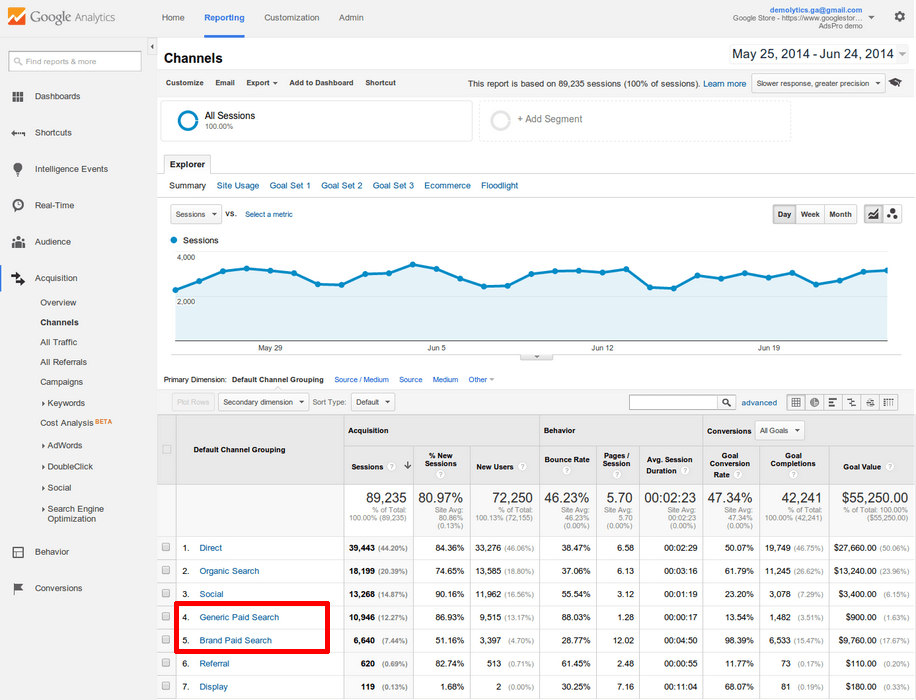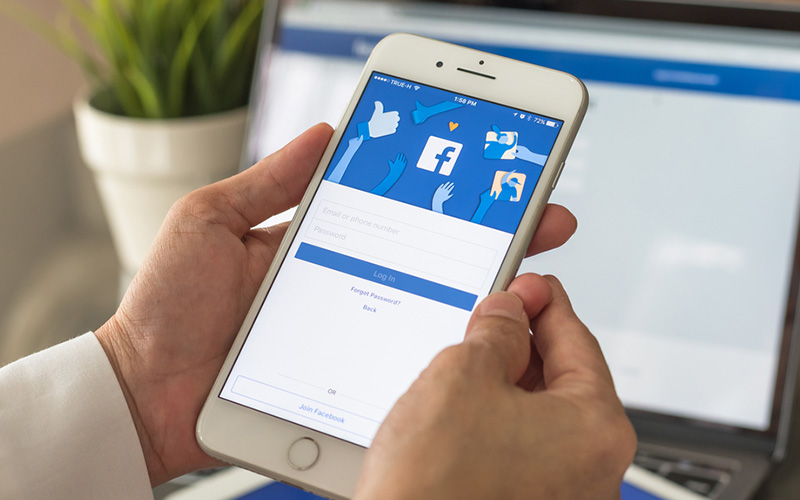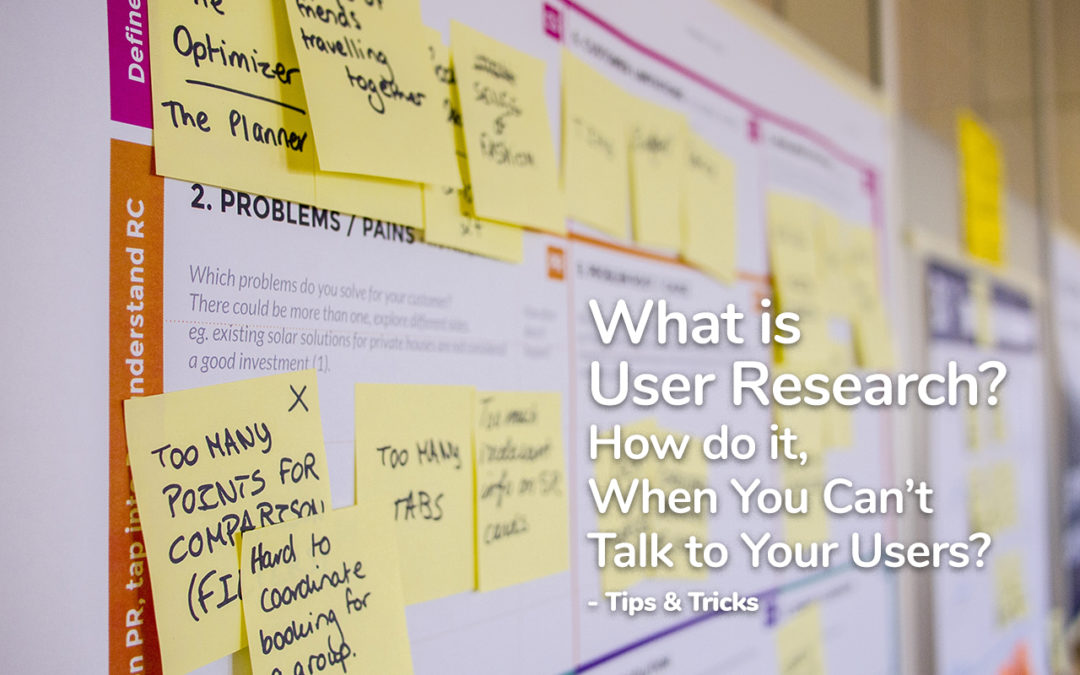UX has spread its tentacles in all the areas of the digital landscape. Considering the expectations users have on website performance, user experience has become indispensable for marketing too. UX and marketing must team up to benefit from each other. Marketing professionals deal with a lot of people on a routine basis, unlike UI/UX designers.
Below I mentioned some marketing tools, which every UX designer should learn and use to hack the marketing strategy.
So, they are very well aware of what people want and need when they visit any specific website. Say, if you are an online retailer who sells clothes, the people that visit your site are of course looking for buying clothes. What is the solution that you can offer to their problem? Make their search easy.
Marketers can shed some light on buying behavior and psychology, which is quite a riddle for the UI/UX designers. That said, it is seen that marketers have no clue on the fundamentals of app design or website, yes they have knowledge of selling but need help when it comes to presenting it effectively to the users.
The point is, marketing and UX designers need to build a strong working relationship to succeed in their respective domains. Agreed, the budgets of both types of work are often included under the same category of ‘marketing money’, but individually, their functions and outcomes are different to a great extent. Here are some ways to bridge the gap between the two and enhance your site’s conversion rate with them working together-
Going Beyond Interfaces
The notion that is completely wrong about user experience is that it only deals with building delightful interfaces. Yes, this is a segment of UX, but it touches a very small portion of a bigger discipline. This process of designing an interface, which happens on screen, is known as user interface design or even interaction design.
It is just a subset of user experience; a part of much broader techniques involved in the discipline. At the core, the user experience is essentially about the relationship between people and technology. To be more precise, it is about recognizing and framing that relationship.
With the advancement of technology and digital evolution, the nature of this relationship becomes clearer. Also, as the wearables and the Internet of Things (IoT) are rising more in its presence, the phenomenon will emerge and even the viewpoints on user experience being related to screens will be changed.
The average user in 2018 will wait only a few seconds for a page to load and almost 80% of users to avoid a website with poor UX. It means less conversion = bad marketing.
All About Product
There is a significant difference between digital marketing and user experience. In simple words, marketing is about creating the want for things. Designing deals with making things for wants. UX is inspired by design. Thus, it is naturally more inclined towards the product design end of the process.
UX designers generally ask ‘Why’ about many product decisions. This can create a difference of opinion with marketing teams, who are more driven on how to push sales of the target product. Nevertheless, user experience designers co-ordinate with digital marketing teams and work on optimization that takes place in campaigns.
Eventually, UX designers will question the assumptions of the product, based on close contact with the users. This can guide digital marketers as it can inform them on how to promote a product more convincingly.
Experiences Happen
Every product comes with experience, even if we do not include the same in our marketing plan. Nonetheless, the most impactful marketing happens beyond the moments or channels we cater to and is known as experience.
Digital marketing mostly works on the channels that can bring in customers i.e. print, digital and mobile. But the issue is that customers are concerned just with fulfilling their needs and that's what our product's motto is too. The major flaw here is that people don't have channels, they exist in between the gaps in channels.
Of late we have started addressing this problem with concepts like cross-channel experiences or even omnichannel experiences. But these concepts fail to make a mark. They propagate business logic and convince customers in terms of the potential of the businesses rather than focusing on customers' personal needs.
This is where most marketing efforts fail as the conversion rates tend to get stuck in these gaps. These gaps are places where UX design lives. Include your UX designer as a part of your digital marketing department and this will be the best solution to the imbalance caused.
79% of customers admit to searching for another site if the one they landed on does not live up to expectations

Wide Research
Digital marketing usually doesn’t exert much on research. It is seen that the approach with research is limited to studying the results of a wide marketing-oriented research program.
Marketing research focuses on figures for a fixed product in a known market. Thus, quantitative methods become the center of attention. However, the user experience is a research dense discipline, which naturally deals with discovering and grasping real human needs that can be satisfied with a perfectly designed product.
This implies that the techniques used for design research are more qualitative in nature. So, UX is more competent at creating a problem or solution, which can be interpreted more accurately in quantitative terms.
According to Quick Sprout, 82% of people enjoy reading relevant content from company blogs while a whopping 71% of online publishers claim well-formed mobile content significantly boosted user engagement.
The two approaches can be good partners and take care of the fact that a product is creating real human value for users and that it is easily spotted so that businesses gain from the commercial perspective as well.
Time to Collaborate
One of the hurdles faced by the firms is uniting different marketing campaigns to reap the benefit as a whole. According to a survey, nearly two-thirds of the firms feel that distinct marketing units interrupt communication and disrupt the smooth execution of an integrated marketing plan.
Collaborating with the UX design team can remove these units and enhance communications as it creates a common ground to work. Including the UX design team makes the division in responsibility pretty obvious, so that agreement on major goals of the strategy is generated among the team members.
If there are a common message and fixed approach, the UX design team can magnify their efficiency and deliver an excellent website.
Go For User Testing
Marketers may be acquainted with their audience, but what highlights the taste of the pudding is the eating. Don’t forget, UX design teams have control over information that tells how users perceive the website with the help of user testing tools.
These reflect a lot about the buying habits and psychology of the users so that they can improve their marketing campaigns and heighten conversion rates. This will also enlighten the marketers on what they want UX design team to work so as to improve the website and create an awesome UX.
Yes, this involves trial and error but is a great method of designing a brilliant website in the long term.
Joint Campaigns
Digital products are the gateway to campaigns. As a matter of fact, an average company employs around eight different channels for the purpose of their marketing strategies. It is seen that marketing efforts for all channels do optimize user reaction, but don't necessarily blend into the conversion funnel.
Be careful that your email campaign is parallel to your mobile app so that it generates more leads or sales for your company. An easy way to achieve this is to make your website to be the focal point for various channels so that most of your leads can flow smoothly across channels.
Together In Harmony
We all know marketing is all about selling. It is done to refine the products or experiences and does not stand on a service philosophy. As marketing creates value for the business by persuading, seducing and influencing people into buying, user experience, on the other hand, creates value for the customer.
It is somewhat a user's viewpoint towards a brand, system or service. UX corresponds to an emotional or behavioral aspect of the brand. It entails research, personas and user environment to achieve tasks in the most suitable and convenient way possible.
UX can make the campaign more powerful. Further, it can contribute to a company’s social culture, increase its digital traffic and lead to a higher ROI. Although duties are different, UX is just as good as marketing.
What is similar is that UX involves a deep study of the market, what is required and hence set designing according to the needs. It also includes listening after designing is done and adapting to the ever-changing marketplace i.e. adjusting the experience of those in the market.
This can be smoothly done if you consider that users are your market. Yes, that's what users essentially are- they are the market you are catering to. That is where marketing and UX converge.
Good marketers do a lot of stuff that UX professionals do in their projects and vice-versa. Ask any marketing professional and they’ll agree to the fact that recognizing your users thoroughly is anyways considered good business.
Digital Marketing tools list
These following marketing tools will give you detailed insights of user's behavior and experience-
1. Tableau Public

Tableau Public is a simple and intuitive and tool that
offers intriguing insights through data visualization. With this tool you can do:
- You can publish interactive data visualizations to the web for free.
- No programming skills required.
- Visualizations published to Tableau Public can be embedded into blogs and web pages and be shared through email or social media. The shared content can be made available s for downloads.
Google Fusion Tables
When talking about Data Analytics tools for free, here comes a much cooler, larger, and nerdier version of Google Spreadsheets. With this tool you can do:
- Visualize bigger table data online.
- Filter and summarize across hundreds of thousands of rows.
- Combine tables with other data on the web.
3. Google Analytics

Google
Analytics is a free Web analytics service that provides statistics and basic analytical
tools for search engine optimization (SEO) and marketing purposes. With Google Analytics you can track:
- Segmentation for analysis of subsets, such as conversions.
- Custom reports.
- Email-based sharing and communication.
- Integration with other Google products, such as AdWords, Public Data Explorer, and Website Optimizer.
- A UX designer can see user behavior map chart, which helps to understand the user flow.
4. Google Tag Manager
In short, Google Tag Manager is a user-friendly solution to managing the tags, or the snippets of JavaScript that send information to third parties, on your website or mobile app. Adding other products to your site, including but not limited to AdWords Conversion Tracking and Remarketing, DoubleClick Floodlight, and of course, Google Analytics is a breeze.
Google Tag Manager Tutorial (COMPLETE STEP-BY-STEP GUIDE)
5. Facebook Insights

The more customer insights you have, the better you’re equipped to deliver meaningful messages to people. That’s the thinking behind Facebook Audience Insights, a new tool designed to help marketers learn more about their target audiences, including aggregate information about geography, demographics, purchase behavior and more.
Conclusion
We can say, the objective of the companies has shifted to creating real value for their customers than businesses. Social web won’t remain limited to people now. Products have jumped in too. With technology establishing a reign, the dynamics of the situation is bound to change. This is the environment where UX can grow because, the truth is, as a discipline it has never been about technology, it has always been about people. UX and digital marketing must work in conjunction with each other as they share mutual roles of understanding human behaviour and strengthening brand loyalty.




